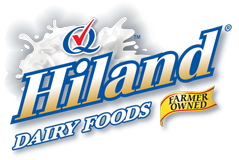Do You Know the Truth About Dairy?
Here’s a question…
Why do we drink milk from other animals?
The simple answer, of course, is that it provides a reliable and enjoyable source of protein, calcium and a variety of other essential nutrients. But when did we as a species decide to make the leap from consuming human milk as infants to the regular lifelong consumption of the milk of cows, goats and other animals?
The history of milk consumption.
Well, it turns out, we humans have been consuming animal milk for a long time. In fact, there’s direct evidence from bronze-age human teeth that we’ve been consuming animal milk for at least 5,000 years – though indirect evidence points to the consumption of milk as far back as 9000 BC.
One fascinating corollary of this is that the domestication of animals for the production of milk may have caused a portion of humanity to develop lactase persistence – or the ability to consume milk beyond infancy (lactase is the enzyme that allows the body to digest lactose, the sugar that makes milk taste sweet).
Those of us whose bodies do not produce lactase can exhibit the symptoms of lactose intolerance when consuming milk and certain other dairy products.
Lactase persistence seems to be most common in people who descended from northern Europe, where dairying has been common for thousands of years – though it is also found in people who descend from certain tribes in Africa that also have a history of domestic milk production.
Just think about that for a second…if true, it means that our millennia-long love affair with milk may have actually caused our bodies to evolve to more readily digest it. Talk about dedication!
Lactose intolerant?
And if you’re lactose intolerant and cannot drink Hiland Dairy Milk (and we sure hope you’re not), you can blame your ancestors for not getting on the dairy bandwagon 5,000 years ago. But fear not; you can still enjoy Hiland Dairy Lactose Free Milk and Hiland Dairy Milk Alternatives that will give you the protein, calcium and other essential nutrients your body needs!
Thank you for signing up!

